
Midwestern Women: An Essential Reading List
Meghan O'Gieblyn Recommends 8 Novels From Ohio to Iowa and Beyond
My earliest awareness of the Midwest as a region—and myself as a Midwesterner—came from reading novels by male writers. I spent much of my early adulthood immersed in the mute physicality of Hemingway’s Nick Adams stories, the Michigan wilderness of Jim Harrison’s novels, the lovelorn desolation of William Gass’s characters. Many of these books are authored by men who’d left the Midwest for New York or Europe and are characterized by an urgency to say something definitive about the region and its role in American life. Some are unambiguously bleak. If Sinclair Lewis’s Main Street solidified the middle-American small town as a place of smug conservatism and dull middlebrow culture, Jonathan Franzen has renewed that referendum for our time. (“Oh, the sadness of this place!” Gary Lambert cries in The Corrections, while visiting his parents in Minnesota.) Other authors, like F. Scott Fitzgerald, are sentimental, idealizing the Midwestern childhoods that supposedly put them in touch with a more authentic and rooted American experience.
Women who have written about the Midwest are rarely spoken of categorically. Some (like Margurite Young) have been inexplicably overlooked, while others (like Toni Morrison) have reached such transcendent stature, their writing is not considered strictly Midwestern. Like their male counterparts, many are writing as exiles from the region, but their visions are often complicated, characterized by uncertainty more than repudiation or easy romanticism. In Jane Smiley’s A Thousand Acres, the narrator, Ginny, looks out at the Iowa cornfields and thinks about the vast marshland that once covered the landscape before it was drained by European immigrants. “The view along the Scenic,” she notes, “taught me a lesson about what is below the level of the visible.” A capacity to look beneath the surface is what distinguishes the best regional writers. This is particularly true in the Midwest, a region that does not reveal itself to those who see the world in broad strokes. Class signifiers are more subtle here, and prejudice and racism are often veiled beneath the insidious pleasantries of Midwestern nice. The women I’ve chosen for this list are united by a willingness to revisit the history of the region, or revise it, calling attention to what has been forgotten and what has gone unsaid.
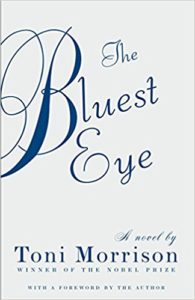
Toni Morrison, The Bluest Eye
Morrison is rarely regarded as a Midwesterner, despite the fact that she frequently insisted upon this identity. “I am from the Midwest, so I have a special affection for it,” she said in a 1983 interview. “No matter what I write, I begin there.” While her most well-known novels are set in the region (Sula and Beloved take place in Ohio; Song of Solomon in Michigan), only The Bluest Eye unfolds in her hometown of Lorain, Ohio, a mid-sized city on Lake Erie whose south end is dominated by a sprawling steel mill. In the opening chapter, the child narrator, Claudia, walks with her family along the railroad tracks with burlap bags, gathering up coal that has been discarded from the railroad cars (just as Ruth, in the Bible, gathers barley behind the reapers). Ohio interested Morrison because it was a state, as she put it, with “both a southern and northern disposition.” The uppermost cities were dotted with underground railroad stops that led to freedom in Canada, while the southern end touched Kentucky and was a site of cross burnings and lynching. She regarded the state’s polarity as a metaphor for the nation as a whole. “Ohio,” she once said, “is a curious juxtaposition of what was ideal in this country and what was base.”
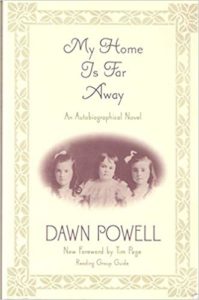
Dawn Powell, My Home is Far Away
Powell is best known for her New York novels, which lambast the affectations of the city’s literary scene. But her autobiographical fiction about her childhood in Ohio suggest that she got a useful education as a social satirist in the Midwest. Powell’s tumultuous childhood took her and her sisters through the entire social strata of turn-of-the-century Ohio, from the countryside to the city, from boarding houses to the lifeless mansion of their wealthy stepmother. Powell dwells on the way the term “nice” functions as a euphemism for middle-class morality (“nice people didn’t joke and whistle, nice people worried about money, appearances, tidiness, possessions”) and notes that on farms, speaking loudly is a sign of transparency and respectability. Midwesterners insist, even more than Americans in general, on the illusion of classlessness, so parsing social distinctions requires a highly attuned ear for that which is coded, suggested, or unsaid. There is perhaps no better training ground for the comedian of manners.
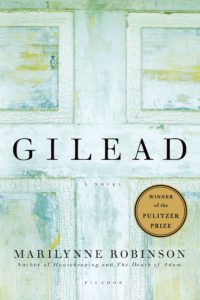
Marilynne Robinson, Gilead
Set in southwest Iowa in the 1950s, the novel centers on the meditations of an aging clergyman who is writing a letter to his son. Reverend Ames’s reflections wander from the theological to the mundane, but a common theme is the importance of history and memory. In recounting his family lineage for his son—the story of his abolitionist grandfather and his pacifist father, both ministers—Ames also recalls the forgotten history of Iowa, a state whose earliest settlers were Quakers and religious abolitionists who integrated the state’s churches and social institutions before the Civil War. In her essays, Robinson has lamented the fact that both the Midwest and Christianity have lately been colonized by the fear-driven politics of the religious right. Gilead is, in many ways, an elegy for what she has called the “repressed” history of Iowa, and a glimpse of what the region might have become had history taken a different course. “The passion for equality that was so strong in the early settlements was forgotten,” she noted in a 2004 interview. “Iowa fell into the pattern of other states. . . And then something happened in the culture that not only made all this recede, but made people forget that it ever happened.”

Susan Choi, A Person of Interest
This novel centers on the life of Professor Lee, an Asian-born (his country of origin is never specified) tenured professor nearing retirement at a small Midwestern university. When a deadly terrorist explosion erupts on campus, Lee comes under public scrutiny and is forced to confront a past he’s tried to forget. Although the town in the novel is unnamed, the landscape is recognizably Midwestern. Lee observes the sadness of tulips burdened by April snow (they “looked like penitents to him, prostrating themselves in abased ecstasy”) and bemoans the dismal state of local restaurants (“The menu was limp, pallid, possibly dangerous sushi flown in secondhand from Chicago”). But perhaps the most distinctively Midwestern quality of the novel is the sense of paranoia, an ambient feeling of being cornered. As Lee comes under suspicion by the authorities, the landscape is increasingly characterized as “landbound” and “landlocked,” reflecting his growing dread that this town, like his past, is impossible to escape. Choi grew up in Indiana, and has spoken of how the Midwest infected her sense of identity, such that she has a “visceral” reaction each time she reads the famous “that’s my middle-west” passage from The Great Gatsby “It is a primal landscape for me,” she said, in a conversation published in The Atlantic. “You know, the first scenes that you see never go away.”

Bonnie Jo Campbell, American Salvage
Most of the stories in this collection take place in southwest Michigan, a landscape of militias, meth, and industrial decline. In one of the most memorable stories, “World of Gas,” Susan, a single mother works at a propane gas company during the lead-up to Y2K. Her office is flooded with men who are stockpiling from the disaster, and who offer her unsolicited advice on how she should be preparing. “This millennium business was just another distraction to keep men from being of any goddamned use whatsoever,” she gripes. The story’s title contains a wry bit of wordplay, conflating rhetorical “hot air” with the actual fumes of testosterone-driven activities that surround her on all sides. In the final scene, Susan lies in bed, listening to the clamor of industrial noise—an airplane flying overhead, the din of the paper factory—and indulges in a fantasy: what would life be like if Y2K did indeed bring about the end of civilization? All the chainsaws, tractors, and motorcycles would go silent, she thinks, and “men of all ages—everywhere—men talking about football, auto engines, politics, hydraulic pumps, and the mechanics of love—would finally just shut up.”

Angela Flournoy, The Turner House
This novel, set in Detroit, is an epic family history that toggles between the 2008 housing crisis and the Great Migration. It is also a ghost story: Cha-Cha, the eldest of the 13 Turner children, is haunted by an apparition that once visited the bedroom of his childhood home and shows up again, unexpectedly, as he is approaching late middle-age. But the hauntings of this story also point to the elusive nature of race relations in the industrial Midwest. When the family patriarch, Frances, arrives in Michigan Central Station in 1944, coming north from Arkansas, he notices that prejudice in Detroit is more insidious than it was in the South: “There was cruelty in the country too, but it was plain. Not veiled beneath promises of progress, nor subtle when it manifested itself.” In the Midwest, the daylight oppression of Jim Crow is sublimated into the more shadowy practices of redlining and racist real estate pacts. In the end, the novel conceives of Detroit through the conventions of the gothic, in which the repressed returns in shadowy guises that are no less malevolent. Just as the members of the Turner family are haunted by family secrets, so the past continues to haunts the present, and the legacy of the south persists in the north.
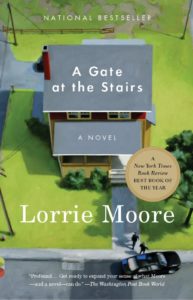
Lorrie Moore, A Gate at the Stairs
In some sense, this novel belongs to a tradition of coming-of-age stories in which a rural young woman arrives in the city (Dreiser’s Sister Carrie, Hamlin Garland’s Rose of the Dutcher’s Coolly). But in deference to the realities of the contemporary Midwest, the rural-urban divide in this novel is less a binary than a spectrum. Tassie, the young narrator, grows up on a farm, but it’s a small hobbyist outfit devoted to heirloom potatoes, and her father is eccentric enough that the neighbors find him suspicious. Moore is better than any contemporary writer on the perils of pretentiousness in the Midwest, a place in which painting one’s barn the wrong color—Tassie’s father opts for a whimsical blue and white, rather than the standard red—can doom one to social opprobrium. If Tassie’s family is too enlightened for the countryside, she finds herself equally alienated when she leaves for university in a more populous college town—the fictional city of Troy—where she confronts professors who hold forth on “Henry James’s masturbation of the comma” and where she finds herself staring bewilderedly at the menus of posh French restaurants that “served things that sounded like instruments—timables, quenelles.”
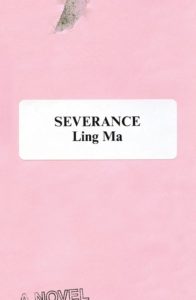
Ling Ma, Severance
Midwesterners are known to boast that our region is the most likely to survive global meltdown: the American interior has no risk of coastal flooding, maintains a low risk of heat spikes and drought, and has an abundant supply of freshwater. That seems to be the logic of the characters in Severance, who flee New York City in the wake of a fever epidemic and begin a long trek to Chicago, “the even-keeled, prairie center of the Great Lakes region.” For these survivors, the allure of this Midwestern metropolis is its imperviousness to disaster, its sturdy buildings having already survived “so many fires and floods.” But in the end, the group makes it only as far as the suburbs, where they hole up in an abandoned shopping mall. The dream of rustic living is supplanted by a more banal reality, as they wander up and down the dimmed halls of the mall, retracing the steps of their somnolent adolescences in similar towns. This depiction of the Midwest feels unexpectedly of our time, at a moment when coastal nostalgia for the heartland has fixated as much on frontier sentimentalism (prairie dresses, artisanal foods) as it has dead mall videos and ruin porn. At times, the novel’s descriptions of the Midwest—a place of deadened Olive Gardens and empty Kmarts—feel less like the visions of a post-apocalyptic future than a realistic portrait of postindustrial towns.
Meghan O'Gieblyn
Meghan O'Gieblyn lives in Wisconsin. Her writing has appeared in Harper's Magazine, n+1, the New York Times, The Guardian, Oxford American, Ploughshares, newyorker.com, The Point and Tin House, and has been included in the Pushcart Prize anthologies and in The Best American Essays 2017. Her essay collection, Interior States, is available now from Anchor.



















